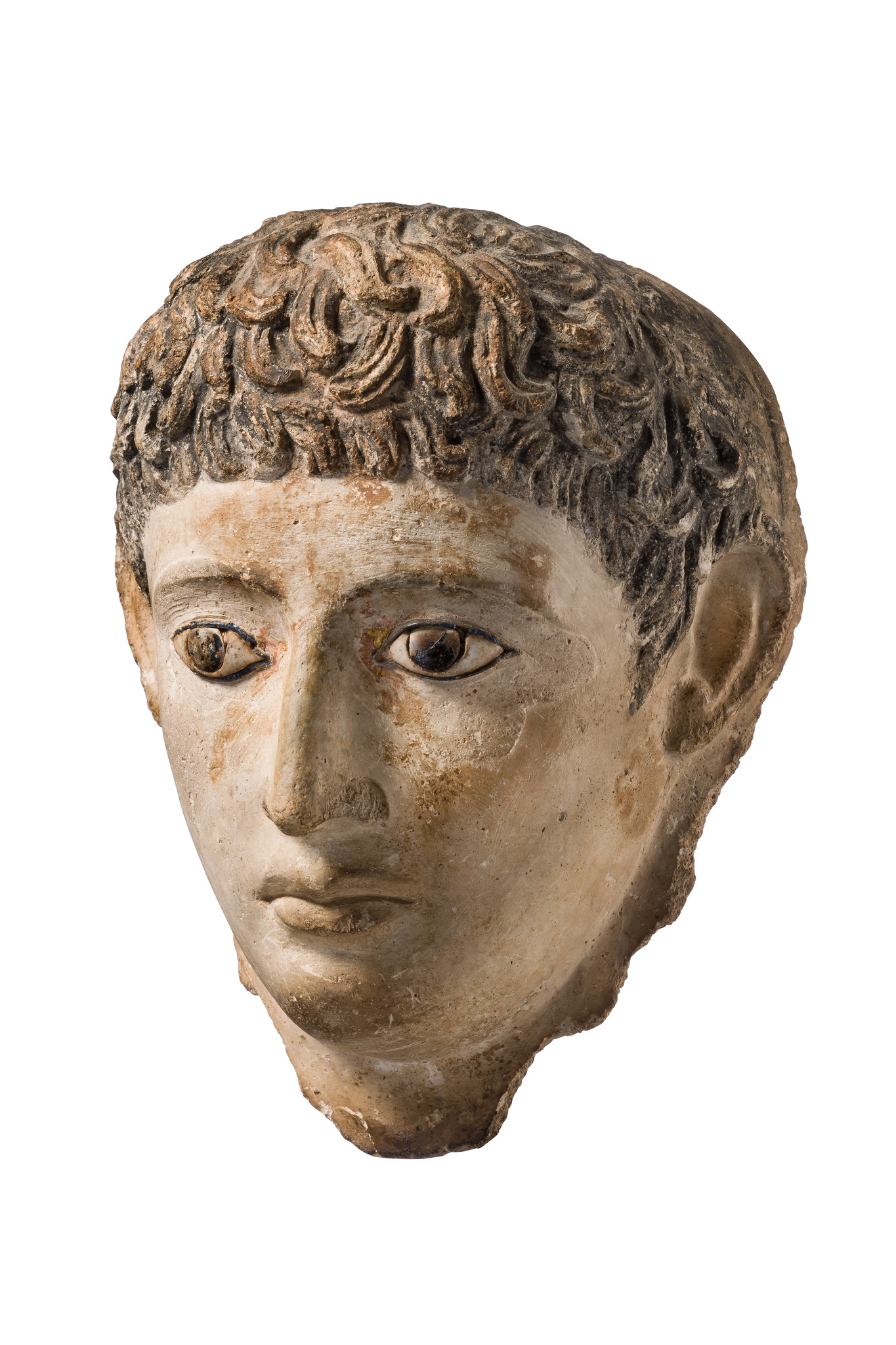Masque de sarcophage d'un jeune homme, env. 2e siècle apr. J.-C. · Europe-Antique, Romano-égyptien · ID: 3051214
Jean-David Cahn, Basel, Switzerland (2001)
Angela Henkel-Küsters, Düsseldorf, Germany
Description
rest., base
This sacophagus mask of a young man is made from layers of plaster or stucco upon papyrus or linen and is painted with black and white pigment. The dramatic eyes are outlined with metal to mimic kohl cosmetic eyeliner, pupils and sclera are elaborately inlaid with different materials. His fashionable hairstyle is arranged in natural-looking curls in relief.
A mask like this would have been placed over the face and fastened into the linen wrappings of a mummy. Death masks were created for the soul to recognize the body and return to it, and so masks were made in the relative likeness of the deceased.
A shift towards more naturalistic features, as seen here, reflects the profound change that the Greco-Roman world brought to Egypt. Depictions of a deceased person’s distinctive face, full head, or body replaced the stylized art of dynastic Egypt.
Masks like this one would have served to honor the dead and, as such, were typically displayed next to a simple wooden coffin during funeral rites and then buried with the dead. Some scholars posit that Egyptians began to follow traditional Roman mortuary practices during the Romano-Egyptian period as well. In such traditions, these masks would be worn by a family member or actor during the funeral procession then displayed within an aristocratic household throughout the year and worn annually during Parentalia (a 9-day Roman festival in honor of family ancestors).
Expertise
Art Loss Register Certificate, AH 00073, 07/03/2001
Exposition
Tefaf Maastricht 2001, No. 274
Remarques
This object is subject to the UNESCO Cultural Heritage Protection Act. Export documents are required for export (subjected to a fee).







